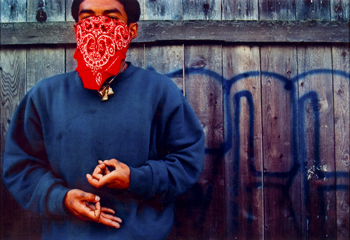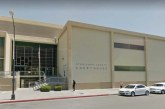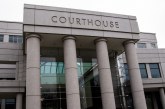 Two weeks ago, in the Kalah trial, Deputy DA Ryan Couzens spawned accusations and anger as he attempted to get in testimony from Officer Duggins of the West Sacramento Police Department about a conversation he had with Marco Benitez.
Two weeks ago, in the Kalah trial, Deputy DA Ryan Couzens spawned accusations and anger as he attempted to get in testimony from Officer Duggins of the West Sacramento Police Department about a conversation he had with Marco Benitez.
Mr. Couzens attempted to establish that Mr. Benitez, a witness for the defense, was assaulted by Tommy Kalah, a brother and son to some of the defendants. The implication here was that Mr. Kalah had done this to intimidate the witness.
According to a brief filed by Deputy DA Ryan Couzens, the property on Walnut Street in West Sacramento, that he refers to as the compound, “has been a hotbed of Asian gangster activity over the years,” including a number of documented fights and drug deals.
On December 15, 2010, several defendants were arrested as the result of an ongoing investigation into suspected narcotics activity at certain Walnut Avenue addresses. It was a culmination of a lengthy series of investigations by the West Sacramento Police Department.
When Mr. Couzens brought up the issue of Mr. Benitez two weeks ago, the defense objected that the prosecution had withheld evidence.
Judge Fall ultimately disqualified the testimony on the grounds of hearsay, and then admonished the Deputy DA that there is a reason why there are discovery rules in trials and that “in California Courts we not do trial by ambush.”
However, because he did not disqualify the evidence itself, there would be a chance for Mr. Couzens to bring back the information in a way that did not involve hearsay.
He attempted this on Monday in the form of the police report on the assault of Marco Benitez.
The defense argued that this evidence should have been discovered to them and as it was not, it should be excluded.
Mr. Couzens argued that the police had a group video, and in the gang testimony he wanted to establish an incident where two gang members, one of them Tommy Kalah, beat up Mr. Benitez in order to silence him.
Judge Fall asked Mr. Couzens why this was not discovered to the defense.
Mr. Couzens argued that they had just learned about it the first week of trial. He said he thought the evidence was excluded on the grounds that it was hearsay, and he said that obviously, if it were excluded for other reasons, he could not bring it in.
Judge Fall still did not exclude it for failure to turn over discovery. He argued that it was excluded because it was still hearsay. The police report was pealing back one layer of the hearsay, but it still was hearsay.
Sometimes police reports and the information in them can be introduced because they contain statements from the defendant which would be exempt under a provision that they were statements against penal interests. However, the victim’s testimony would be excluded.
Thus, the incident could not be used by the prosecution to establish gang activity.
It leaves open the possibility of it being used as impeachment evidence against the testimony of Mr. Benitez. The defense will have to figure out if they wish to roll the dice on that issue.
Gang Expert Testifies:
One of the more onerous requirements under the Penal Code 188.22 statute on gang enhancements is the establishment of “predicate offenses,” which are used to show the statutorily-required “pattern of criminal gang activity.” The offenses do not necessarily have to be gang crimes, but they do have to have been perpetrated by gang members.
The prosecution must establish that the group has “a primary activity of commission of one or more of the predicate crimes listed in the statute. Proof that a “group’s members consistently and repeatedly have committed criminal activity listed in the gang statute” is sufficient to establish the gang’s primary activity.
This provision has become almost a free shot for the prosecution to introduce the worst of gang crimes that have nothing to do with actual offense.
A 2006 article that examines the impact of gang enhancements in trial argues, “It allows prosecutors to introduce frightening evidence and images about the gang, making it more difficult for the accused to get a fair trial on the underlying charges, defense attorneys say.”
“When the gang card is out there, it is difficult for jurors — and it’s only human nature — to not be predisposed to want to remove these persons from our society,” one defense attorney said. “If he is a gang member, he is a bad guy already. So of course, (he) is more likely to have committed the crime. So we can’t get an even shot.”
The article adds, “In trials where the defendant is an alleged member of the Colonia Chiques gang, prosecutors often play a gangster-rap music video produced by the gang. The video is an assault of crude, violent language and images of tattooed and shaven-headed Latino men flashing gang signs — which can inflame the fears and prejudices of jurors, defense attorneys say. “
The ties for predicate offense can be thin. In this case, the Kalah family is said to be tied to the Asian Gangster Crips (AGC). Apparently, the DA could not even find predicate offenses from the AGCs in West Sacramento, so they went to Stockton to establish an AGC pattern of criminal activity.
Indeed, the Stockton detective that the gang expert, Officer Duggins of the West Sacramento Police Department, spoke with did not have any knowledge of AGC activity in West Sacramento.
How is this legal? All in the name of fighting gangs.
—David M. Greenwald reporting





“the Stockton detective that the gang expert, Officer Duggins of the West Sacramento Police Department, spoke with did not have any knowledge of AGC activity in West Sacramento”
Is it common that a gang expert from a different area would know the other areas a specific gang might be active?
[quote]The ties for predicate offense can be thin. In this case, the Kalah family is said to be tied to the Asian Gangster Crips (AGC). Apparently, the DA could not even find predicate offenses from the AGCs in West Sacramento, so they went to Stockton to establish an AGC pattern of criminal activity.
Indeed, the Stockton detective that the gang expert, Officer Duggins of the West Sacramento Police Department, spoke with did not have any knowledge of AGC activity in West Sacramento.
How is this legal? All in the name of fighting gangs.[/quote]
Well, I assume it is legal, or the judge would not have allowed it. If it is illegal, I assume the defense will appeal on this basis. If they do not appeal, then clearly it was legal…
Elaine: the whole point is that it is legal, gang laws are among the most archaic I have seen.
[quote]How is this legal? [/quote]
[quote]the whole point is that it is legal[/quote]
If you don’t like the law, then take the necessary legal steps to get it changed…
It would really help me if you the article more carefully before you made these comments. That’s exactly what needs to happen, gang laws need to be changed, this testimony simply illustrates that need.
[quote]It would really help me if you the article more carefully before you made these comments.[/quote]
What brought this on?
Gang validation used to (1990) require about 10 different things (tattoos, claiming a gang, photos with gang signs, etc.) then over time and because law enforcement wanted to…. and could… (the gang manual is a SECRET DA and cop thing) it whittled down to one thing to become a validated gang member.
I’m not kidding.
I did a trial in federal court 11 years ago and my client was not a gang member. I made a big deal about it and 1/2 way thru the trial the cops went out (DEA agents) and made him one! (It’s called “validated”). I laughed about it as did the jury and Judge Shubb.
Truth be told, as a catholic school girl wearing a catholic school girls uniform in the 60’s they could have validated me under ” their rules” today. They mean nothing…. by themself.